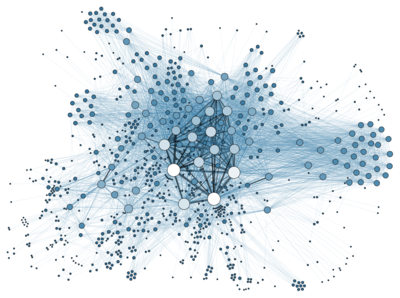Data-Driven Resource Allocation for Dynamical Networks
How do we allocate resource in a dynamical network by knowing only time-series data from sensors?
Spreading processes on a graph can be used to model phenomena such as cascading failures in a power network and virus spreading within a computer network. For many applications, we would like to control the rate of spreading within a given budget. I have worked on the problem of controlling spreading processes in an unknown network based on time series data describing the evolution of the spreading process collected from observations. A common approach is to identify from observed data a single network that is subsequently used for resource allocation. Such kind of identification problem is often ill-posed, so that additional prior knowledge is needed. Instead of determining the appropriate prior knowledge, my formulation tries to compute a robust allocation for the worst-case network that is consistent with observed data. I have developed an efficient numerical solution that can be used to allocate resources for a network consisting of hundreds of nodes. I have also conducted an empirical study of the solution method on epidemic control within a geographic region.

- Shuo Han, Victor M. Preciado, Cameron Nowzari, and George J. Pappas, “Data-driven network resource allocation for controlling spreading processes,” IEEE Transactions on Network Science and Engineering, vol. 2, no. 4, pp. 127–138, 2015. [pdf]